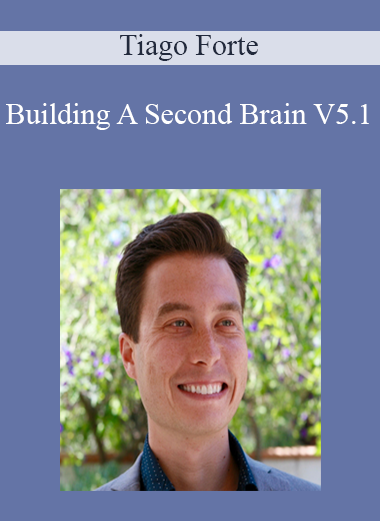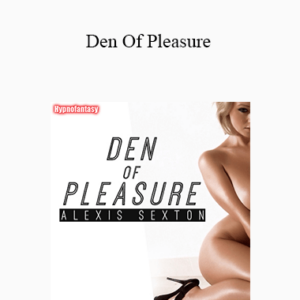PLEASE REFER TO OUR PROOF : WATCH HERE!
Building A Second Brain V5.1 – Tiago Forte
The Curriculum
Unit 1: Introduction to the Course
- What to expect: schedule, roadmap, format, communication, and the 3 pillars of the course
- Our objective: to learn how to use digital notes as thinking tools — to capture, organize, and retrieve our ideas and insights
- What is Personal Knowledge Management, and why does it matter?
- Why organization and collaboration are the missing links in creative knowledge work
- Evaluate your knowledge management skills across 11 dimensions of performance and confidence (with post-course evaluation to measure your progress)
Unit 2: Organizing for Insight
- Review the 8 requirements for a universal digital organizational system
- Understand the subtle but important difference between short-term projects and ongoing areas of responsibility
- Feeling unorganized? Deploy the P.A.R.A. method to organize all your digital information across multiple platforms
- Discover why almost no one has an effective Project List (a dashboard of current commitments) and how to fix it step by step, with feedback and guidance
- Banish information overload using Magic Number 4: a helpful constraint to preserve your working memory
- Hone your ability to scale your attention at different horizons using actionability gradients
- Update and clarify your Project List, and use it to organize your files across all platforms using the P.A.R.A. method
Unit 3: Digital Cognition
- Use the 4 essential requirements for digital note-taking to help you evaluate and select a digital note-taking program
- How to amplify the single biggest opportunity for making new connections without expending more time and effort: productive randomness
- Stigmergy: practical lessons on productivity from the study of emergence
- How to utilize the under-appreciated power of incubation: heavy lifts vs. slow burns
- What the Feynman Method can teach us about “punching above our intellectual weight”
- Find out how the best note-takers build intellectual capital using compounding gains
- Transform raw material into knowledge ammunition: how to use digital notes to form valuable bodies of knowledge for a side project, career advancement, or new business
- Identify your personal research and learning priorities using the Feynman Method, as a filter for incoming information
Unit 4: Progressive Summarization
- Understand the pros and cons of tagging-first, notebook-first, and note-first database designs
- Become skilled at balancing discoverability and understanding to increase the return-on-investment of your note taking
- Don’t have time for reading and research? Apply Progressive Summarization to surface key points for later review
- Strategic laziness over rigid rules: note-taking strategies that leverage human nature, instead of fighting it
- How to design individual notes for “glanceability” and recognition over recall
- Moving from “black box” knowledge management to a Personal Information Landscape
- Avoiding the perils of problem definition: balancing compression vs. context
- Practice Progressive Summarization on one of your notes
Unit 5: Maximizing Return-on-Attention
- Explore the hard science of transient hypofrontality: how to maximize mental states of flow for performance, enjoyment, and learning
- Understanding the impact of setup and transaction costs (environmental, mental, and emotional) on productivity
- How to create intermediate packets: exposing your personal value chain for rapid feedback and learning
- Become interruption-proof: placeholding, chunking, and modular deliverables
- Understand the relationship between small batch sizes, quality, learning, and experiences of flow for knowledge workers
- Wresting with knowledge: why interacting with information is so much more effective than consuming it
- Encoding variability: how to externalize your thinking and accelerate your learning using different types of media
- Turn one of your notes into a new deliverable designed to generate valuable, targeted feedback
Unit 6: Just-In-Time Project Management
- Learn Just-In-Time Project Management: a pull system for managing reference materials and executing on deliverables
- Why you should think of workflow as strategy, and apply solutions to specific problems
- Divergence and convergence: use design thinking to escape any dead-end
- Choose from among 16 proven workflow strategies, with examples, case studies, and downloadable templates
- Banish procrastination using the Archipelago of Ideas approach to new projects
- Mood-based productivity: using fast cycle time, opportunistic tagging, and active sorting to maintain motivation and leverage unique states of mind
- How to generate novel insights and valuable deliverables using personal design sprints
- Using universal design principles (affordances, signifiers, constraints, mappings, and feedback) to plan the structure of your work
- Select and try out 3 of the 16 workflow strategies on one or more of your projects or deliverables
Unit 7: PKM Workflow Canvas
- Step-by-step walkthrough to complete our proprietary PKM Workflow Canvas, an evolving map of your personal knowledge management system
- Review your notes from all the previous units to select the techniques you will integrate into your workflow
- Summarize your main learnings from the course, as a checklist and reminder for future projects
- Visualize the map of your personal knowledge management system, in a physical artifact that can be improved over time
- Get feedback on further areas for improvement, based on the exercises you completed in the course
- In-depth case study of using PKM to rapidly plan and execute a Forte Labs client project
- Complete your PKM Workflow Canvas with the tools, techniques, and strategies you’ve selected and customized for your needs
Unit 8: The Big Picture
- Container vs. stream thinking: changing paradigms for a world of information abundance
- Understand why situational awareness and curation are the key skills required to navigate streams of information
- Learn how to strengthen creative confidence by identifying and overcoming limiting beliefs around your productivity, thinking, and learning
- Realize the full potential of digital notes: integrating P.A.R.A. Progressive Summarization Workflow Strategies into your daily routine
- The future of productivity and personal knowledge management
Here is the simple truth: you cannot afford to keep everything in your head. You need tools to help you remember, so you can focus on thinking and creating.
You need Personal Knowledge Management (PKM).
Wikipedia defines PKM as “a collection of processes that a person uses to gather, classify, store, search, retrieve and share knowledge in their daily activities.”
Pretty good. A bit dry, though.
Here’s my definition:
“The art of capturing, organizing, and sharing your ideas and insights, using a systematic approach and tools that you trust to support creative breakthroughs in your work.”
Think about any kind of artist: painters, writers, filmmakers, playwrights, or musicians.
They don’t just sit down at a blank canvas and create from nothing. They are constantly collecting tidbits of inspiration and research from the world around them, to be able to use it as raw material in their work.
I believe that today, all knowledge workers need to think like artists.
I don’t care if you’re a graphic designer or an accountant, a salesperson or an engineer, your success depends on bringing your very best creative thinking to work every day.
In the past, creative people used paper notebooks, sketchpads, and filing systems to catalogue their ideas.
Today, we have a much more powerful tool at our disposal: software.
Specifically, a whole new category of apps designed specifically for digital note-taking: apps like Evernote, OneNote, Simplenote, Bear, Google Keep, Zoho Notebook, Dropbox Paper, Notability, Apple Notes, and others.
Most of us operate today as “knowledge workers.” That’s not going to cut it as the world moves faster, change accelerates, and competition ramps up.
What is needed today is for us to become “knowledge managers.” To set up our digital tools to work seamlessly together, preserving what we know and resurfacing it when most needed.
I’ve created this online course to help people do exactly that. In the course, I start by leading participants step by step through the process of organizing their digital life.
But “getting organized” is just the beginning. Once we have the foundation in place, we’re ready to start building a Personal Knowledge Library.
In other words, a suite of tools for systematically capturing, organizing, and then sharing your ideas with the world.
In Building a Second Brain, I will show you how to design a digital note-taking system of your own. To capture your ideas and make them shine in your work. To organize your digital life and have more time for the things that really matter: showing up more fully at work and at home.
This course is about giving you the confidence to know what’s worth pursuing, what’s not, and what’s next.
If you’re paid to think for a living, you can’t afford to not invest in the most valuable asset you own – your knowledge.
See you inside!
Tiago
Your Instructor
Tiago is the founder of Forte Labs, a productivity training firm and consultancy based in San Francisco. He helps people envision and prepare for the future of work using a human-centric approach to productivity.
Read more: http://archive.is/36GOO
Delivery Method
– After your purchase, you’ll see a View your orders link which goes to the Downloads page. Here, you can download all the files associated with your order.
– Downloads are available once your payment is confirmed, we’ll also send you a download notification email separate from any transaction notification emails you receive from coursesblock.com
– Since it is a digital copy, our suggestion is to download and save it to your hard drive. In case the link is broken for any reason, please contact us and we will resend the new download link.
– If you cannot find the download link, please don’t worry about that. We will update and notify you as soon as possible at 8:00 AM – 8:00 PM (UTC 8).
Thank You For Shopping With Us!








